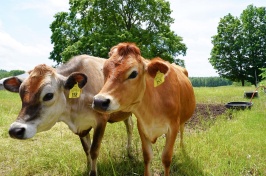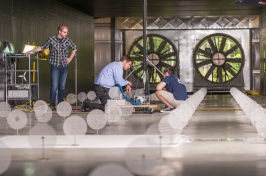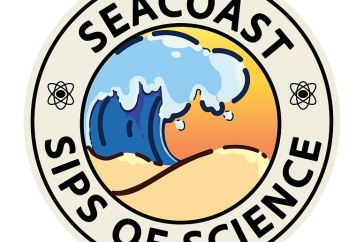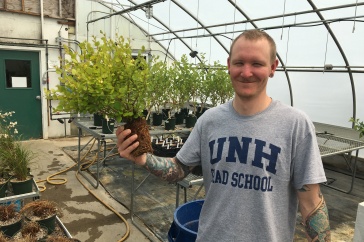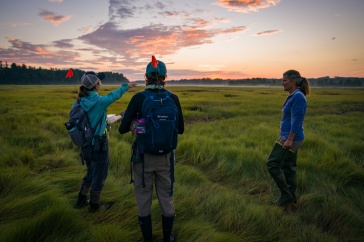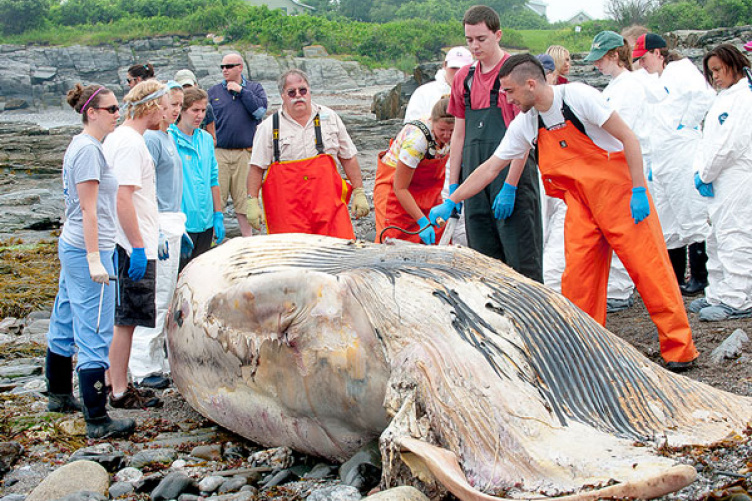
Talk about a whale of a learning experience.
Early this month, a long-dead and decomposing 10,000-pound minke whale provided hands-on learning for 10 undergraduates, including three UNH students, in the “Whales, Seals and Sharks” class at the UNH/Cornell University Shoals Marine Laboratory (SML) on Appledore Island.
The course, taught by SML director and Cornell professor Willy Bemis, had just begun when Bemis learned that the 25-foot minke (pronounced MINK-ee) had washed up on private land in Cape Elizabeth, Maine. Eager to rid their beach of the whale, which had died at sea, the homeowners contacted Lynda Doughty of the nonprofit group Marine Mammals of Maine; she reached out to Bemis in hopes that the whale’s final moments could teach would-be marine biologists a thing or two.
“This really kicks this course off with a bang,” Bemis said as the class, dressed in disposable jumpsuits and armed with machetes and meathooks, prepared to dissect the cetacean Wednesday, July 3.
The students – including Wildcats Riley Cole ’15, Tessa Farrell ’16, and Jasmin Buteau ’17 -- boarded the R/V Heiser at 5:30 a.m. to make the three-hour cruise from Appledore to the Cape Elizabeth home of Cap and Christina Mona, the reluctant recipients of the whale, whose cause of death is unknown. Despite the early hour, they eagerly anticipated what Bemis and instructor Susanne Renselaer promised would be a morning of education, an afternoon of disposal, and a full day of messy, stinky work.
“It was a once-in-a-lifetime opportunity and one of the worst olfactory experiences of my life,” said Cole, a marine biology major from Plaistow. With Vicks VapoRub dabbed beneath their noses to cut the stench, the students and others dissected the whale, removing blubber, muscle, intestines and organs. Before lugging the soft tissue to a truck that would transport it for disposal, the students braved the stench and dove into the unique lessons the carcass provided.
“It was crazy: It’s very strange to be that up-close and personal and even inside such a large mammal,” said Farrell, a marine biology major from South Beloit, Illinois.
“The hands-on approach definitely enhanced my knowledge of minke whales and their anatomy because we were using all of our senses working with the dissection and removal of the whale, rather than looking at a picture in a classroom,” added Buteau, an incoming first-year from Moultonborough.
In addition to anatomy, the Bemis and Renselaer discussed and demonstrated how minke whales – the most common whale in the Gulf of Maine – have evolved, showing adaptations within the anatomy.
At the end of the day, the whale’s skeleton, divided into sections, went back to SML’s Portsmouth base, where it will be cleaned for future study. In addition to the skeleton and a memorable day of teaching and learning, SML received a gift of $500 from the Monas, who were grateful to start the holiday weekend with a whale-free beach. And for Bemis, who is retiring as director of SML after this summer, the day will live on as more than a memory: the minke model has been named Willy the Whale.
Dedicated to undergraduate education and research in marine science, Shoals Marine Laboratory is a partnership between Cornell University and UNH.
Originally published by:
UNH Today
-
Written By:
Staff writer | Communications and Public Affairs






























